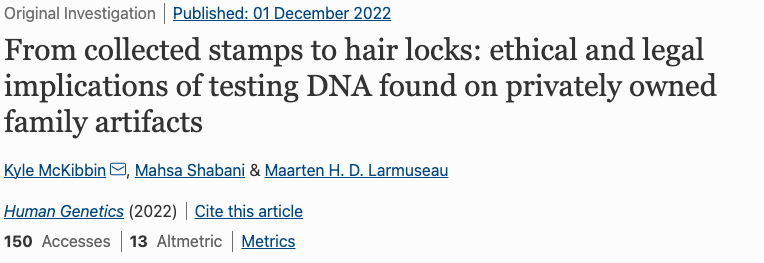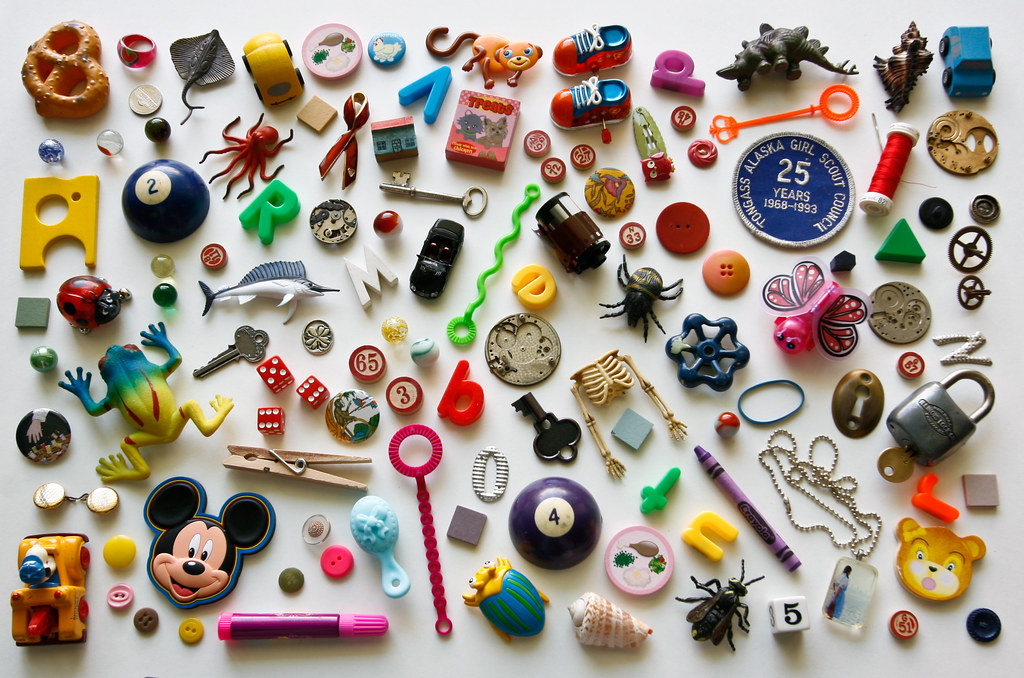Direct to consumer genetic testing of family heirlooms and keepsakes (e.g., used stamps, baby teeth) provide insight into genealogy and ancestry.
Published earlier this month, one of the direct consequences of the sequencing revolution and increasing affordability of genetic testing has been direct to consumer (DTC) services and targeted investigations of historic individuals. However, unlike previous genetic testing on historic figures that primarily relied on comparing DNA from probable descendants, recent investigations have been using artifacts (termed artifact DNA testing or artDNA in the article) associated with individuals to answer various questions; McKibbin et al. 2022 mention notable examples:
“In January 2022, a study revealed how DNA sam- ples obtained from saliva on WWI postage stamps could be used to resolve a nineteenth century paternity dispute (Haas et al. 2022). In another example, DNA samples obtained from blood stains on rocks and leaves were used to authen- ticate the official version of the death of a Belgian monarch in a 1934 climbing accident (Larmuseau et al. 2016). In 2021, scientists were able to confirm a genetic relationship between the legendary nineteenth century Native American leader Sitting Bull and a great-grandson using only a very limited amount of genetic material found in a hair sample (Moltke et al. 2021).”

These types of DTC and genetic testing expands upon well known ancestry and genetic trait services (e.g., 23 and Me). Unlike ancestry and trait tests that use fresh samples, artDNA investigations must also contend with obstacles typical of museomic and ancient DNA research, such as fragmented and damaged molecules. Regardless of sample source (i.e., artifacts or directly from individuals), all DTC services face ethical concerns, for the researchers and testing companies, as well as the individuals being investigated and customers (i.e., those requesting services).
One of the key issues centers on consent. Within a museum environment, the individuals whose genetic sample is being tested is deceased, negating any opportunity for direct informed consent or withdrawal. While there are many many moral quandaries and social regulations about the treatment of the deceased, legal president and law concerning genetic testing of deceased individuals outside of forensic contexts is very very limited, especially of personal belongings and associated artifacts. Living individuals also face potential obstruction or denial of consent through artDNA. Identity verification of the donor can only be done after the sample has been sequenced and compared to probable, living relatives. “Thus, an artDNA testing service or lab might find itself sequencing a sample that belongs to a living individual sent by a customer either accidentally or with mal intent”, with unknowing contaminant donors also potentially becoming identifiable (McKibbin et al. 2022). Furthermore, genetic results could also be distressing for the individual and relatives; previously unknown paternal or lineage relationships can be revealed, disrupting family structures, and medical information about genetic carrier status (predisposition for disease) can lead to life changing decisions (e.g., breast mastectomy).
I enjoyed this article because the ethical concerns and many of the laws mentioned directly apply to museum collections. Because of the potential harm artDNA and DTC services can produce, this article drives home the necessity to conduct thoughtful and slow science. Rapid sequencing and data analysis technology have made the science of genetic testing more accessible and easily obtainable, while at the same time, also allowing people to conduct science for science’s sake, producing results that, in hindsight, should not have been produced or made accessible. In this regard, many of the legal structures discussed in the article have been implemented because of emerging disputes about genetic testing results. A primary example about DTC genetic data privacy concerns the decades long unsolved murders attributed to the Golden State Killer, who was genetically identified and subsequently arrested because crime scene evidence was compared to DTC databases. Unknowable consequences are very real for genetic research. Anticipating potential harm and asking who may benefit or be hurt by research questions and results need to be at forefront of every scientific inquiry.
Original article: McKibbin, K., Shabani, M. and Larmuseau, M.H., 2022. From collected stamps to hair locks: ethical and legal implications of testing DNA found on privately owned family artifacts. Human Genetics, pp.1-11.
Other references: Haas, C., Körner, C., Sulzer, A. and Kratzer, A., 2022. 19th century family saga re-told by DNA recovered from postcard stamps. Forensic Science International, 330, p.111129.
Larmuseau, M.H., Bekaert, B., Baumers, M., Wenseleers, T., Deforce, D., Borry, P. and Decorte, R., 2016. Biohistorical materials and contemporary privacy concerns-the forensic case of King Albert I. Forensic Science International: Genetics, 24, pp.202-210.
Moltke, I., Korneliussen, T.S., Seguin-Orlando, A., Moreno-Mayar, J.V., LaPointe, E., Billeck, W. and Willerslev, E., 2021. Identifying a living great-grandson of the Lakota Sioux leader Tatanka Iyotake (Sitting Bull). Science advances, 7(44), p.eabh2013.
![]()
